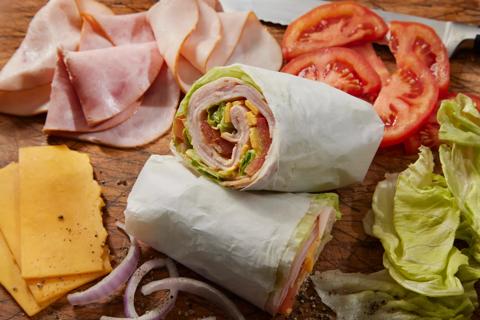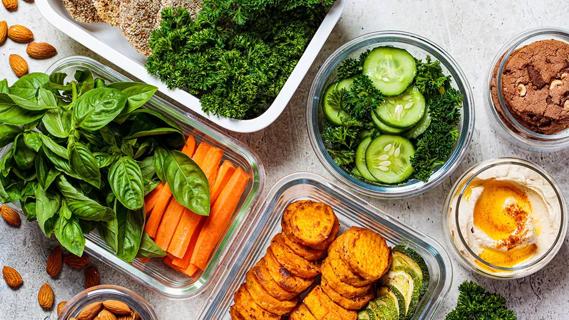Guide to making good choices when dining out

What if we told you it’s possible to eat healthier meals at your favorite restaurants?
Advertisement
Cleveland Clinic is a non-profit academic medical center. Advertising on our site helps support our mission. We do not endorse non-Cleveland Clinic products or services. Policy
“Regardless of the restaurant, it’s important to watch your portions and look for balance in your meals,” says registered dietitian Katherine Patton, MEd, RD, LD, CSSD.
No matter if you love a hearty Mexican dish or delicious Asian cuisine, Patton gives some tips for ordering at specific types of restaurants and what to look for:
If you’re going to an Italian restaurant, skip high-calorie dishes loaded with creamy sauces or extra cheese such as alfredo, lasagna and carbonara. Be cautious to avoid extra calories in buttered garlic bread by limiting how much you put on your plate. Make sure to limit sausage, meatballs, cream, butter, high-fat meats and cheese. Sausage and meatballs in particular add extra fat and calories to your dish.
Order this instead: Start off your meal with a salad filled with vegetables, fruit, nuts, seeds, olives, avocado and extra virgin olive oil and vinegar for the dressing. Skip the cheese and bacon to limit your intake of saturated fat. If you choose pasta, get it with red sauce, which gives you the nutrients and lycopene in the tomatoes and is much lower in calories than cream sauces. Other healthier sauces include pesto, olive oil or wine varieties. You can also ask about whole grain pasta to give it more fiber and more nutritional value. Don’t forget that you can always try to customize your dish and ask for extra vegetables for the sauce, such as broccoli or mushrooms. Consider sharing a meal or asking for a lunch size portion, as well.
Advertisement
How often do you fill up on those warm, crunchy chips and savory salsa before your meal at your favorite Mexican restaurant? Even when you have a solid plan for a healthy dinner, it’s hard not to be tempted to grab a handful — or three. If this is a temptation for you, ask that the server not bring chips around, or you can put a small serving into your plate that you limit yourself to eating.
Most of us also know that cheesy or deep-fried entrees with lots of sour cream are high in fat and that we should avoid them. Guacamole is something to limit as well because while it’s a source of healthy monounsaturated fat, too much still means too many calories, so watch your portion size.
Order this instead: Choose fajitas or look for other grilled items on the menu. Look for entrees that focus on a lean protein such as chicken, fish, beans and vegetables. Go for black beans or pinto beans rather than refried beans and ask for lettuce leaves instead of tortilla to lower your carbohydrate intake.
At an Asian restaurant, it’s important to avoid egg rolls, wontons and other deep-fried items, which are high in fat. You also want to limit sweet and sour items and egg drop soups, which can also be high in calories without giving you the nutritional bang for the buck. If you see any items on the menu with “crispy” in the name, skip it.
Order this instead: Choose a meal focusing on lean proteins and vegetables, but remember that the sauce is especially important because it can have a lot of hidden oil. To avoid a high-calorie, high-fat sauce, ask to have your meal cooked in broth or stock and not oil. Be sure to choose brown or steamed rice over fried rice, which are much lower in fat.
Eating healthy at a steakhouse is really about managing portions. It’s tempting to order a big 16 ounce steak and fill up on bread before the meal, but this is where managing your portions come into play. If you order a baked potato, don’t load it up with butter, cheese and sour cream. Order those on the side and use those toppings sparingly.
While mushrooms and onions are great additions to a steak, a lot depends on how the cooks prepare them. Watch out for too much butter or oil, and if in doubt, ask the waiter if the chef can go light on butter and oil.
Order this instead: Try to stick to a 6 ounce portion of leaner cuts like sirloin, filet, flank or London broil when it comes to steak. For a side, try adding a sweet potato, brown or wild rice and a cooked vegetable or salad.
Pizza is a classic favorite. When you order that savory, delicious pizza, portion control and a few careful choices about toppings and crust can make a big difference in calories and fat. Avoid deep-dish pizza and high-fat toppings, with the biggest culprits being pepperoni, sausage and bacon.
Advertisement
Order this instead: Start with a garden salad without cheese and an oil-based dressing on the side. This can help you feel less hungry and less likely to overindulge on pizza. You want a thin crust or a whole wheat crust with either veggie toppings or leaner meat options like chicken, ham or Canadian bacon. Another trick is to request half the cheese and put meat on only half the pizza.
You might think it’s not possible to eat healthy at a fast food restaurant, but you can limit fat and calories with good choices. Even if an entree is a salad, check that it doesn’t have a lot of mayo (like tuna salad) or a lot of calories (like pasta salad). You want to limit cheese and bacon and avoid fries and large, supersized portions.
Order this instead: Choose salads with grilled chicken and dressing on the side or choose a grilled chicken entree or broiled burgers. Some fast food places serve fruit, yogurt, and side salads to help balance out a fast food meal. If you know what fast food restaurant you’ll be visiting, you can find nutritional information online. Many restaurants have nutrition facts pamphlets available and some even have calories listed on the menu inside and at the drive-through.
Advertisement
Before you head out to eat, look up the menu online. This way, you’ll be prepared to make a quick decision on your meal. This win-win situation will prep you for success.
“Restaurants know customer service is important,” says Patton. “Don’t hesitate to ask for meals prepared the way you want them.”
Advertisement
Learn more about our editorial process.
Advertisement

With a focus on internal cues for hunger and fullness, this eating style may revolutionize your relationship with food

Review the ingredients, watch for sugar and fat, and choose one with the right amount of protein for your needs

A typical recommended balanced diet is half fruits and veggies, a quarter protein and a quarter grains

Foods high in protein, fiber and water can help keep hunger at bay

This quirky food trend is harmless, as long as you’re getting enough protein, fiber and healthy fats

This vital nutrient helps your brain and body in many ways — and most of us need more of it

Wrapped or sandwiched, try to choose fillings and condiments that are minimally processed, low in saturated fat and high in fiber

Set yourself up for success by carefully choosing your recipes, storage containers and prepping day

Start having sex about 72 hours before ovulation, then at least every other day during your fertile window

Attachment theory suggests that your earliest relationships shape connections throughout your life

It isn’t a recognized mental health disorder, but research shows that problematic social media use can negatively affect your mental health, self-esteem and sleep